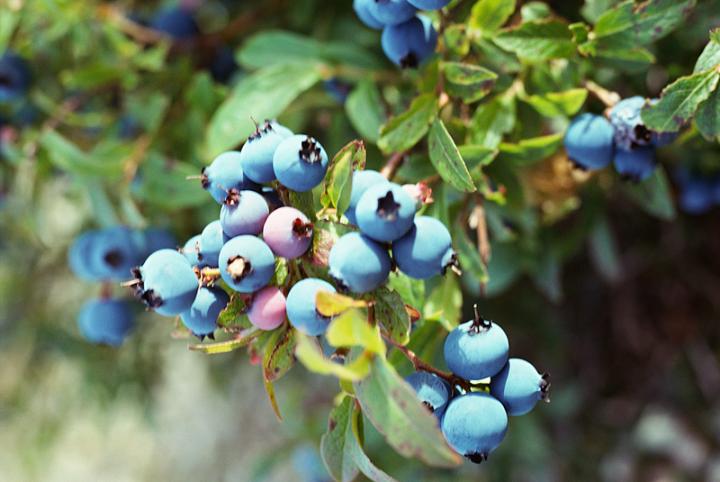






The modern blueberry is a 20th century invention. Before the 1900s, the only way to enjoy these North American natives was to find them in the wild. Then, scientists started to unlock the secrets of cultivating blueberries, and we’re glad they did! Plump, juicy berries are now easy to grow in your backyard on bushes that are resistant to most pests and diseases, and can produce for up to 20 years. A relative of rhododendron and azalea, blueberry bushes are also an attractive addition to your overall landscape, offering scarlet fall foliage and creamy white spring flowers. Learn more about why you should grow blueberries in your home garden.
There are three types of blueberries: highbush, lowbush and hybrid half-high. The most commonly planted blueberry is the highbush. Most blueberry breeding has focused on this species, so there are many varieties that range widely in cold hardiness and fruit season, size, and flavor. See more about blueberry varieties below.
Blueberries are partially self-fertile, so you will harvest more and larger berries by planting two or more varieties. Planting more than one variety can also extend the harvest season.
Highbush (Vaccinium corymbosum): A six-foot shrub adapted from Zone 4 to Zone 7. For withstanding cold winters, choose ‘Bluecrop’, ‘Blueray’, ‘Herbert’, ‘Jersey’, or ‘Meader’. For big berries, choose ‘Berkeley’, ‘Bluecrop’, ‘Blueray’, ‘Coville’, ‘Darrow’, or ‘Herbert’. For flavor, usually the main reason for growing your own fruit, choose ‘Blueray’, ‘Darrow’, ‘Herbert’, ‘Ivanhoe’, ‘Pioneer’, ‘Stanley’, or ‘Wareham’.
Lowbush (V. angustifolium):For the coldest climates, lowbush varieties are your best bet, adapted from Zone 3 to Zone 7. These are the blueberries you find in cans on supermarket shelves. When fresh, the fruits are sweet and covered with a waxy bloom so thick that the berries appear sky blue or gray. The creeping plants, a foot or so high, are spread by underground stems, or rhizomes. They blanket the rocky upland soils of the Northeast and adjacent portions of Canada. Lowbush blueberries make a nice ornamental fruiting ground cover. Plants sold by nurseries are usually seedlings or unnamed wild plants, rather than named varieties.
Half-High: Breeders have combined qualities of highbush and lowbush blueberries into hybrids known as half-high blueberries. University of Minnesota introductions include ‘Northcountry’, a variety that grows 18 to 24 inches high and has excellent, mild-flavored, slightly aromatic sky-blue fruits; and ‘Northblue’, which grows 20 to 30 inches high and produces an abundance of dark-blue, nickel-size, somewhat tart fruits-just right for pies. ‘Northland’ is a half-high-3 to 4 feet-from Michigan, with bland, average-quality fruit.
Pink Champagne: If you have purchased a Pink Champagne blueberry bush, it has been recalled by the USDA. Find out what to do about the recall.
In Ireland, baskets of blueberries are still offered to a sweetheart in commemoration of the original fertility festival of Lammas Day, celebrated on August 1.
Copyright © www.100flowers.win Botanic Garden All Rights Reserved